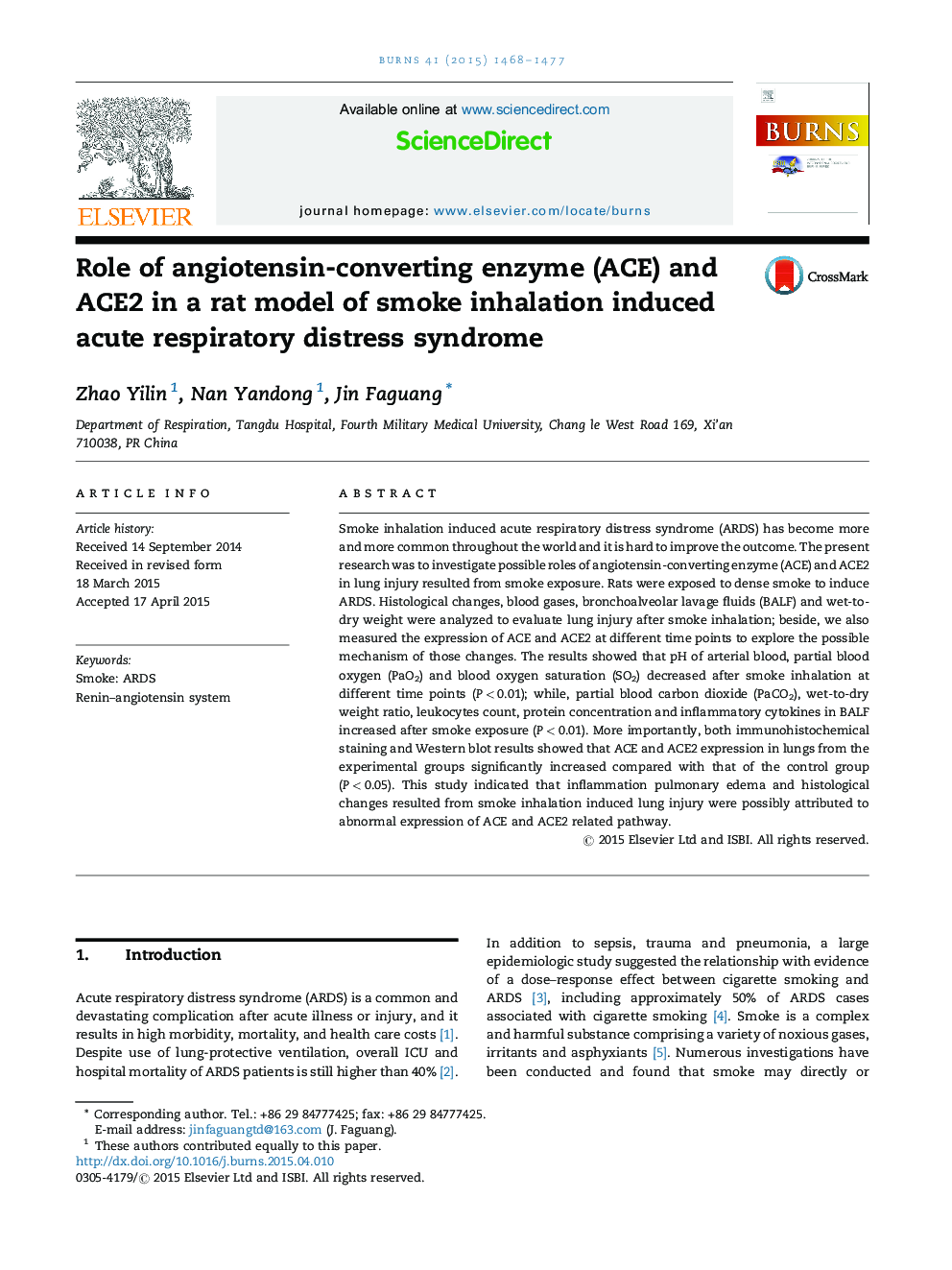| Article ID | Journal | Published Year | Pages | File Type |
|---|---|---|---|---|
| 3104253 | Burns | 2015 | 10 Pages |
•Smoke inhalation results in lung injury manifestations and blood gas changes.•This is associated with increased protein and leukocytes content in BALF.•Smoke inhalation elevated W/D weights associated with pathological changes.•Abnormal expression of ACE and ACE2 pathway in lung was found after smoke injury.
Smoke inhalation induced acute respiratory distress syndrome (ARDS) has become more and more common throughout the world and it is hard to improve the outcome. The present research was to investigate possible roles of angiotensin-converting enzyme (ACE) and ACE2 in lung injury resulted from smoke exposure. Rats were exposed to dense smoke to induce ARDS. Histological changes, blood gases, bronchoalveolar lavage fluids (BALF) and wet-to-dry weight were analyzed to evaluate lung injury after smoke inhalation; beside, we also measured the expression of ACE and ACE2 at different time points to explore the possible mechanism of those changes. The results showed that pH of arterial blood, partial blood oxygen (PaO2) and blood oxygen saturation (SO2) decreased after smoke inhalation at different time points (P < 0.01); while, partial blood carbon dioxide (PaCO2), wet-to-dry weight ratio, leukocytes count, protein concentration and inflammatory cytokines in BALF increased after smoke exposure (P < 0.01). More importantly, both immunohistochemical staining and Western blot results showed that ACE and ACE2 expression in lungs from the experimental groups significantly increased compared with that of the control group (P < 0.05). This study indicated that inflammation pulmonary edema and histological changes resulted from smoke inhalation induced lung injury were possibly attributed to abnormal expression of ACE and ACE2 related pathway.
